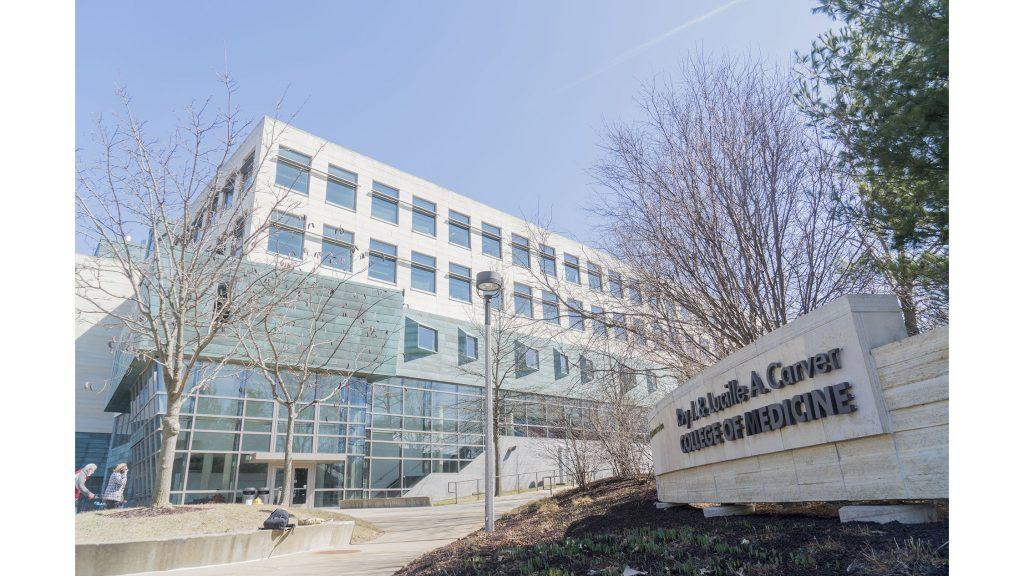Carver College of Medicine, UIHC aim to retain in-state students
As Iowa faces a shortage of healthcare providers, the Carver College of Medicine is working to retain its in-state students and residents.
The Carver College of Medicine is pictured on April 4, 2018.
January 14, 2019
Although the majority of slots in the University of Iowa Carver College of Medicine are reserved for in-state students, many have continually opted to leave the state for their residencies, a pattern that UI Vice President for Medical Affairs Brooks Jackson calls an issue of retention.
The outflow of medical students comes as the state has suffered recent physician shortage, in which there’s a growing discrepancy between the population and the number of medical professionals to accommodate them.
“We have actually one of the highest numbers of medical students per capita but one of the lowest resident slots per capita,” Jackson said. “And that’s a big problem.”
The physician shortage may be a result of students leaving their state for their residencies, he said, because, typically, medical professionals stay to work where they have been trained.
“Last year, 78 percent of our students and graduates went out-of-state for their residencies,” Jackson said. “Because we just don’t have enough slots.”
The low retention rate of Iowans at the UIHC can be attributed to this minimal capacity for residents, a lack of financial scholarships, and high medical-school tuition, especially in comparison with competitors.
“We have excellent students; I’d like to have some outstanding,” Jackson said. “Our in-state tuition is $36,282, and out of 90 medical schools, we’re 26th from the highest.”
RELATED: Brooks Jackson addresses UI Health Care strategic plan
In an effort to provide an incentive for Iowa students, he has kept tuition flat this year and intends to do the same in the coming year. Furthermore, he said, raising scholarship money will be considered a priority, particularly from the federal and state governments.
“The physician shortage would be something the Iowa Legislature has been concerned about,” Jackson said. “We’re hoping that if the federal government doesn’t come through they could help in some way.”
Since 1997, the Centers for Medicare and Medicaid Services has capped the number of medical resident slots nationwide, but Jackson said that the U.S. population has grown substantially in the past 22 years, particularly the elderly population, which requires more medical aid.
To combat this, Jackson said, the medical school will not recruit only pre-medicine students, but also high-schoolers through STEM programs that will familiarize them with medicine and the UI as an institution.
“At first, I wasn’t sure exactly what I wanted to do in medicine,” UI student Emily Rapp said. “I took a class in my high school where we shadowed doctors, and I got a lot of feedback about the different fields.”
As far as a medical profession in the state of Iowa, Rapp said that decision depends on where she chooses to attend graduate school and the many factors that will determine that choice.
UI Physicians Executive Director Douglas Van Daele said the burgeoning shortage of health-care providers is not unique to Iowa, it is is a nationwide trend in the workforce.
“We haven’t necessarily had a reduction in the gross number of people in medicine programs but rather a demand for services,” he said.
If medical students were to stay to do their residencies in Iowa, it would most likely increase their chances of working here as well.
“It’s really challenging to expand the residency program beyond where it is now,” Van Daele said. “I think the key is that we really try to do everything we can to retain the best doctors that we can in the process.”



